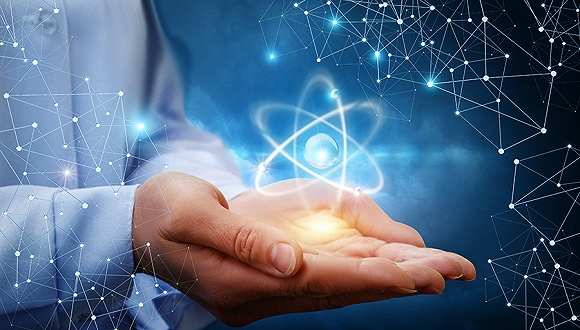The world's first fourth-generation nuclear power Shidaowan high-temperature gas-cooled reactor was put into commercial operation
The world's first fourth-generation nuclear power plant was officially put into operation.
According to Xinhua News Agency on December 6, on the same day, China Huaneng Group Co., Ltd. (hereinafter referred to as Huaneng Group) Shidaowan high-temperature gas-cooled reactor nuclear power plant completed 168 hours of continuous operation test and officially put into commercial operation.
Located in Rongcheng City, Shandong Province, the Shidaowan High-Temperature Gas-cooled Reactor Demonstration Project is a landmark achievement of China's major national science and technology projects with completely independent intellectual property rights, and is also the world's first fourth-generation nuclear power plant.
The project has an installed capacity of 200,000 kilowatts and started construction at the end of 2012. The project is implemented by Huaneng Shidaowan Nuclear Power Company, which is funded by Huaneng Group, Tsinghua University and China National Nuclear Corporation, with shareholding ratios of 47.5%, 32.5% and 20% respectively.
This commercial operation was officially put into operation and transferred to commercial operation at a stable electric power level. This also marks that China has reached the world's leading level in the field of fourth-generation nuclear power technology.

According to the International Forum on Generation IV Nuclear Energy Systems (GIF), the six Gen4 advanced reactor types are sodium-cooled fast reactors, ultra-high temperature gas-cooled reactors, lead-cooled fast reactors, molten salt reactors, supercritical water-cooled reactors, and gas-cooled fast reactors.
The goal of the fourth-generation nuclear energy system is to make nuclear power more economically competitive, safe and reliable, requiring high fuel efficiency, low waste generation, and proliferation and external encroachment capabilities.It is the next direction for the development of the global nuclear energy industry。
Among them, high-temperature gas-cooled reactors (HTGRs) have inherent safety, high power generation efficiency, strong environmental adaptability, and a wide range of uses, and have broad prospects for commercial application in the fields of nuclear power generation, combined heat and power cooling, and high-temperature process heat.
Unlike conventional pressurized water reactor nuclear power plants, the Shidaowan high-temperature gas-cooled reactor consists of two reactors, two steam generators and one steam turbine to generate electricity.
It is called a high-temperature gas-cooled reactor because it does not use water in the cooling process, but uses the inert gas helium for cooling. The main feature of using helium is its ability to absorb heat sufficiently, resulting in high temperatures of more than 700 degrees. Water-cooled reactors that are currently in use can only produce high temperatures of more than 300 degrees.
The outlet temperature of the coolant of a nuclear reactor has a decisive influence on the efficiency of power generation. The average temperature of the helium outlet of the high-temperature gas-cooled reactor can reach 750 degrees Celsius, and has the potential to increase to more than 950 degrees Celsius, and the thermal efficiency can reach 40%-47% by using the traditional steam circulation mode, and the thermal efficiency can reach 50% by using the helium circulation mode.
In addition to high-temperature gas-cooled reactors, sodium-cooled fast reactors are the most experienced advanced nuclear energy systems in operation at present, with a cumulative operating time of 400 reactor years worldwide.
According to the "Advanced Nuclear Energy Technology Development Report" released by Ye Qizhen, director of the expert committee of the China Nuclear Energy Association and academician of the Chinese Academy of Engineering, Russia is a global leader in sodium-cooled fast reactor technology and construction, and China, India, France, Japan, the United States and South Korea have also formulated construction plans for sodium-cooled fast reactors.
In terms of lead-cooled fast reactors, China, Russia, the European Union, the United States, Japan, South Korea and other countries are vigorously promoting key technology research and model design projects, and Russia is in a leading position in engineering advancement. In addition, supercritical water reactors in the European Union, Canada, China, Russia, Japan and other countries are still in the conceptual design stage.
The commercial operation of the Shidaowan Nuclear Power Plant is of great significance and positive impact on promoting the safe development of nuclear power in China and enhancing the innovation capability of nuclear power science and technology, and the localization rate of the power plant's equipment exceeds 90%.
In 2012, the Shidaowan high-temperature gas-cooled reactor demonstration project was started, the main structure construction of the nuclear island and the conventional island was completed in 2015, the hoisting of the reactor pressure vessel was completed in 2016, and the hoisting of the first steam generator was completed in 2019.
In November 2020, the cold function test of Reactor No. 1 was successful.Complete the double-stack cold testThe quality of the core system of the nuclear island has been comprehensively inspected.
On November 11, 2021, both reactors of the Shidaowan High-temperature Gas-cooled Reactor Demonstration Project entered the state of operation with nuclear power. On December 20, the No. 1 reactor completed the initial load operation test evaluation of the generator, and was successfully connected to the grid for the first time.The first kilowatt-hour of electricity is emitted 。
On December 9, 2022, the projectFor the first time, the initial full-power operation of the double-stack was realized, to achieve the stable operation of "two piles with one machine" mode.







